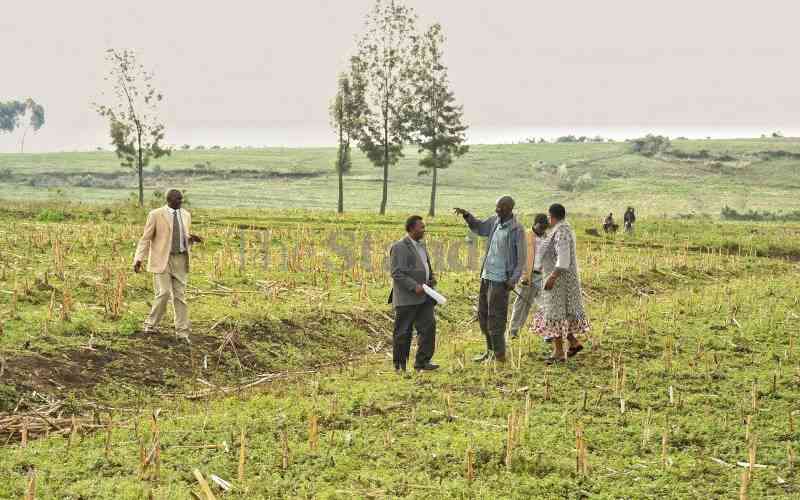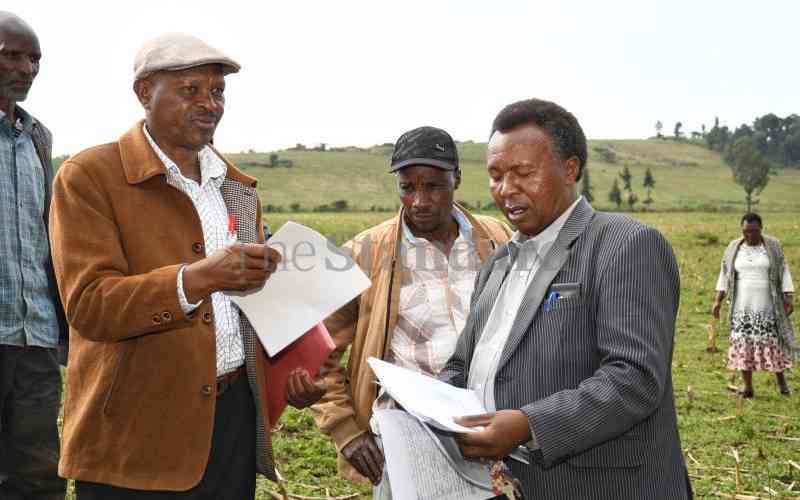The Kekopey Ranch sprawls across the lakeside area and is visible from Galbraith’s house, now the Lake Elementaita Lodge, writes SONIA NJOGU
The Lake Elementeita area became a white settlement when Lord Delamere (1879-1931) established Soysambu, now a 48,000-acre (190 square km) ranch that covers two thirds of the shoreline on the western side of the lake.
To the East of the lake stands Kekopey Ranch, a 30,000-acre piece of land that Delamere gifted to his brother-in-law, the Honorable Galbraith Lowry Egerton Cole (1881-1929).
A brick farmhouse, the main building of Kekopey Ranch, was built in 1917 and is today preserved as the Lake Elementaita Lodge.
From the house, a panoramic view opens up — that of the Soysambu conservancy framed by a series of hills, among them the ‘sleeping warrior’ or the ‘nose of Delamere’, a kopje so named by the Maasai.
At the foot of the hills is the lake that is located between Lake Naivasha and Lake Nakuru. Elementaita is derived from the Masaai word muteita, meaning "dust place", a reference to the parched appearance of the land between January and March.
It is in Kekopey that part of the blockbusters Tomb Raider and Out of Africa were shot.
But the tragic story of its owner, a man as temperamental as he was adventurous, is interesting.
Wikipedia eulogises him thus: "Galbraith was a pioneer settler and farmer of the East Africa Protectorate since 1905.
He entered the 10th Royal Hussars as a lieutenant in 1900, at age 19, and went to South Africa for the Second Boer War. After being injured in the war, he made his way to Kenya where his sister Florence had married the prominent settler Lord Delamere."
Shot himself
When he received the piece of land, he named it Kekopey Ranch, a name derived from a Masaai word meaning "place where green turns white".
This is in reference to the soda and diatomite around the hot springs at the southern end of the lake. Very popular for bathing, the local Maasai claim that it has therapeutic powers. The reed beds nearby are fishing grounds for night herons and pelicans.
In 1917, Galbraith married Lady Eleanor Balfour, niece of former British Prime Minister Lord Balfour. Cole was deported to the German East African Protectorate after he shot dead a farm labourer for stealing one of his favorite Marino rams, imported from New Zealand.
It was not until he returned secretly to Kekopey dressed as a Somali and his mother pleaded his case with the British Government that he was allowed to return.
Stay informed. Subscribe to our newsletter
But dogged by misery, the arthritic Galbraith became blind in one eye and was wheelchair-bound due to the excruciating pain.
He finally shot himself in 1929 at age 48, and was buried at his favourite spot, the viewpoint where his memorial now stands.
In 1977, the Kekopey Estate was sold off to a cooperative society and the land divided into small plots for individual shareholders.
Sanctuary
The Lake Nakuru/Lake Elementaita basin is home to over 400 bird species and it attracts visiting flamingoes, both the Greater and Lesser varieties.
Tilapia, brought in from Lake Magadi in 1962, attract many fish-eating birds that also feed upon the flamingo eggs and chicks.
Over a million birds that formerly bred at Elementaita are now said to have sought refuge at Lake Natron in Tanzania.
Lake Elementaita has been a Ramsar site since 2005, an internationally recognised wetland.
This year it was, as were Lakes Nakuru and Bogoria, declared a Unesco World Heritage Site for the birdlife around them.
In August last year, the lake was gazetted as a wildlife sanctuary.
 The Standard Group Plc is a
multi-media organization with investments in media platforms spanning newspaper
print operations, television, radio broadcasting, digital and online services. The
Standard Group is recognized as a leading multi-media house in Kenya with a key
influence in matters of national and international interest.
The Standard Group Plc is a
multi-media organization with investments in media platforms spanning newspaper
print operations, television, radio broadcasting, digital and online services. The
Standard Group is recognized as a leading multi-media house in Kenya with a key
influence in matters of national and international interest.
 The Standard Group Plc is a
multi-media organization with investments in media platforms spanning newspaper
print operations, television, radio broadcasting, digital and online services. The
Standard Group is recognized as a leading multi-media house in Kenya with a key
influence in matters of national and international interest.
The Standard Group Plc is a
multi-media organization with investments in media platforms spanning newspaper
print operations, television, radio broadcasting, digital and online services. The
Standard Group is recognized as a leading multi-media house in Kenya with a key
influence in matters of national and international interest.








